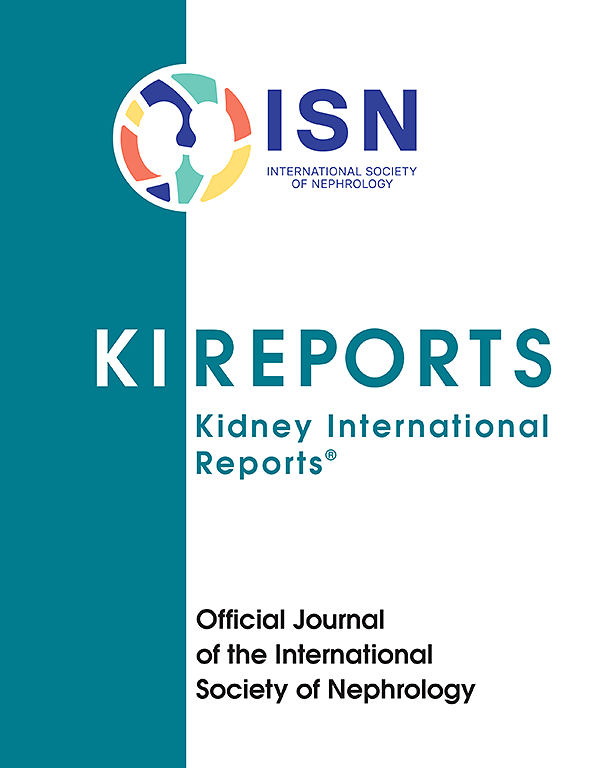Early Thrombotic Microangiopathy After ABO-Incompatible Living Donor Kidney Transplantation
IF 5.7
2区 医学
Q1 UROLOGY & NEPHROLOGY
引用次数: 0
Abstract
Introduction
Although long-term graft survival is comparable with that of ABO-compatible (ABOc) renal transplantation, the risk of antibody-mediated rejection (ABMR) following ABO-incompatible (ABOi) transplantation is higher and can occur as an early thrombotic microangiopathy (TMA).
Methods
We designed a retrospective multicenter study, including all patients who presented with a TMA (histological and/or biological) after an ABOi transplantation (< 1 month) and compared with matched controls who had a favorable initial course with a normal biopsy.
Results
Between 2013 and 2022, 375 ABOi kidney transplants were performed and 23 patients (6.1%) developed TMA (median: 1 day, interquartile range [IQR]: 0–3 days). Twenty-one patients (91.3%) had biological TMA. Among 23 early graft biopsies, histological evidence of active TMA was found in 17 cases (80.9%). All patients received treatment: 20 of 23 received at least 1 session of plasmapheresis and 19 of 23 received at least 1 injection of eculizumab. Eight early graft losses (30.4%) occurred (median: 7 days, IQR: 3–16 days). IgG and IgM anti–blood group antibody (ABGA) levels (peak and last pregraft assay) were significantly higher in the TMA group (peak: P = 0.01 for IgG and P = 0.0006 for IgM; last assay before kidney transplantation [KT]: P < 0.0001 for IgG and P = 0.0003 for IgM). A level ≥ 1/8 for IgG and ≥ 1/4 or IgM before transplantation were significantly and independently predictive of the occurrence of TMA. No other predictive factors were found.
Conclusion
TMA after ABOi transplantation is not a rare phenomenon and is associated with a poor prognosis in nonresponders-to-treatment patients. ABGA titer performed by hemagglutination is an imperfect marker of the occurrence of such a phenomenon.

求助全文
约1分钟内获得全文
求助全文
来源期刊

Kidney International Reports
Medicine-Nephrology
CiteScore
7.70
自引率
3.30%
发文量
1578
审稿时长
8 weeks
期刊介绍:
Kidney International Reports, an official journal of the International Society of Nephrology, is a peer-reviewed, open access journal devoted to the publication of leading research and developments related to kidney disease. With the primary aim of contributing to improved care of patients with kidney disease, the journal will publish original clinical and select translational articles and educational content related to the pathogenesis, evaluation and management of acute and chronic kidney disease, end stage renal disease (including transplantation), acid-base, fluid and electrolyte disturbances and hypertension. Of particular interest are submissions related to clinical trials, epidemiology, systematic reviews (including meta-analyses) and outcomes research. The journal will also provide a platform for wider dissemination of national and regional guidelines as well as consensus meeting reports.
 求助内容:
求助内容: 应助结果提醒方式:
应助结果提醒方式:


